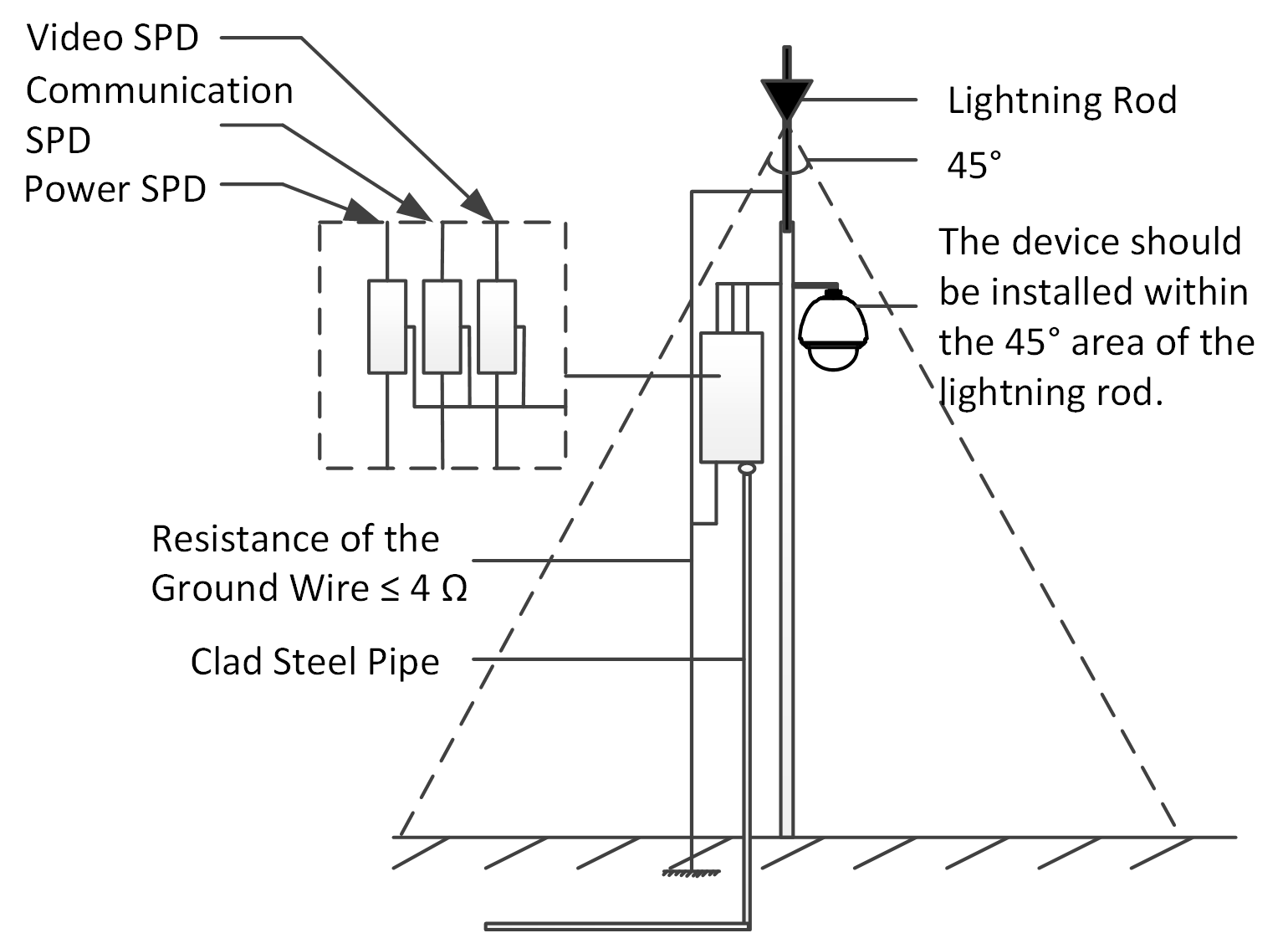Protective Measures for Outdoor Installation
If the device is installed outdoors, necessary protective measures should be taken to ensure safety.
-
Signal cables should be at least 50 meters away from high-voltage power supplies and cables.
-
Route cables under eaves whenever possible.
-
In open fields, use sealed steel pipes to route cables underground and ground both ends of the steel pipes. Overhead cable wiring is prohibited.
-
Surge protection devices (SPDs) and lightning rods must be installed in thunderstorm-prone areas and high induced voltage areas, such as high-voltage substations.
The device should be installed within the protective radius of the lightning protection air terminal. For actual installation, the protective radius is approximate to the area within 45 degree protective angle of the air terminal. The air terminal and the downlead should keep a distance from the device—at least 1 meter when parallel to device cables and at least 0.3 meters when perpendicular to device cables.
SPDs should be installed near the protected device. The SPD on the power cord should be installed with decoupling components to coordinate the action time of SPD and the protection components in the device. The decoupling inductance should be higher than 5 uH (approximately 1 uH for 1 meter of cord).
-
The lightning protection and grounding design of outdoor installation and wiring should be in compliance with the lightning protection requirements of the buildings and local laws and regulations.
-
The lightning protection system should apply equipotential grounding. The grounding device should be able to reduce interference and guarantee electrical safety. It must not be connected to the neutral line on power grid or use the same wire of the neutral line. When the system is grounded separately, the resistance should be no more than 4 Ω and the cross-sectional area of the ground wire should be no less than 25 mm². The grounding point of the device is usually the yellow-green cable (labeled as YELLOW/GREEN
 ) or other substitution (refer to the Quick Start
Guide).
Drive
the ground rod 1.5 meters into the ground and measure whether the resistance
reaches the standard. If not, bury the ground rod deeper or change a ground
rod.
) or other substitution (refer to the Quick Start
Guide).
Drive
the ground rod 1.5 meters into the ground and measure whether the resistance
reaches the standard. If not, bury the ground rod deeper or change a ground
rod.

If the device does not apply equipotential grounding, following risks may occur.
-
Static electricity may cause damage to electronic components, or interference to the image or the control line.
-
The device may be damaged if the device is not grounded on site to release the high energy of a lightning strike in lightning-prone areas.
-
The power supply of the device may be damaged if the device is not grounded to release the high surge energy in areas with unstable voltage.